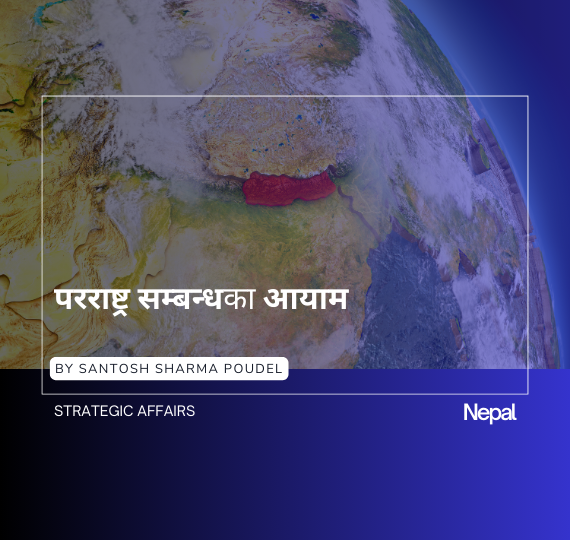The opinion piece originally appeared in the February 2023 Issue of New Business Age Magazine. Please read the original article here.
Since the third generation of the Nepal Trade Integration Strategy (NTIS 2016) was introduced, Nepal and its trade policies have undergone significant changes. First, from 2017 onwards, the country formally adopted a federal structure with seven provinces. Second, for two years in a row (2020-2021), Nepal put all of its efforts into managing the COVID-19 pandemic. The pandemic disrupted Nepal’s domestic and international trade in major ways.
Third, Nepal has seen massive fluctuations in the country’s balance of payments in recent years. One of our regional neighbours, Sri Lanka, declared bankruptcy, igniting policy debates in Nepal as to whether we would run aground into the same problems. Despite this, Nepal’s foreign reserves are growing and will last for at least ten months. However, what is worrying is that our trade deficits are also rising to the same levels as during the pre-pandemic phase of 2020.
Nepal suffers from a considerable trade deficit with its biggest trade partners. For example, in the last fiscal year (FY) 2021/22, with India, our largest trade partner, Nepal’s import-export ratio stood at 8:1. With China, our second largest partner, it stood at a massive 327:1. This trend is worrying and shows the need for Nepal to improve its trade balance with its immediate trade partners. Despite opening up more border points with China, if Nepal does not take significant steps to promote exports, it is very likely that Nepal’s current trade deficit with China would further widen in the years to come. Nepal is also graduating to a developing country from a Least Developing Country (LDC) by 2026, and its trade advantages will decrease even further. As a result, bilateral trade treaties will also become essential for Nepal to retain its trade advantages.
Therefore, the Ministry of Industry, Commerce, and Supplies and the Ministry of Finance, together with other related ministries and departments, have been working tirelessly to create a new trade strategy and related industrial policies to promote trade. Examining where the country missed out with the NTIS and what impact it had on the country’s trade situation is necessary. Furthermore, it is also essential to understand the consumer benefits that trade provides and move towards decreasing the tariff and non-tariff barriers of trade. Policies that increase tariffs and implement protectionist measures to promote non-competitive industries will only burden consumers through higher costs of goods.
Nepal Trade Integration Strategy
The Nepal Trade Integration Strategy 2016 (NTIS 2016) was an updated version of NTIS 2010 and its predecessor, Nepal Trade and Competitiveness Study (NTCS) 2004. It was developed together with the complementary Trade Policy 2015. The NTIS 2016 recognized potential for product and value chain development in three priority export sectors: Agro and forest products, Craft and manufacturing products, and the Services sector. Under these, it identified 12 potential export sectors which are: 1. Large Cardamom, 2. Ginger, 3. Tea, 4. Medicinal and Aromatic Plants (MAPs), 5. Fabrics, Textiles, Yarn, and Rope, 6. Leather, 7. Footwear, 8. Chyangra Pashmina, 9. Knotted Carpets, 10. Skilled and Semi-Skilled Professionals at Various Categories (Remittance-Generating Sectors), 11. IT Services and Business Process Outsourcing, and 12. Tourism.
Export of NTIS goods
Data across the years since the fiscal year (FY) 2015/16 shows that Nepal has seen a slight increase in the identified export goods under the NTIS 2016, however, their percentage contributions to total exports have decreased significantly. For example, in FY 2015/16, NTIS goods made up 47.26% of the total exports, but it significantly reduced to 23.39% as of FY 2021/22. While the values of NTIS exports have increased slightly from Rs 33.2 billion to Rs 46.79 billion across this period, total exports reached Rs 200 billion from Rs 70 billion.
Specifically, in the last FY 2021/22, the list of goods identified under NTIS 2016 only made up less than 25% of the country’s total exports. Focusing on FY 2021/22, out of the total export value of Rs 200 billion, soya bean was the top export with Rs 48.12 billion of exports, this makes up 24.06% of our total exports. Products in the NTIS list, such as carpets, came in fifth contributing Rs 9.57 billion, while woven fabrics and cardamom came in sixth and seventh contributing Rs 5.66 billion and Rs 4.81 billion respectively. Other NTIS goods came further down the list. Even after adding all the NTIS goods exports, it falls short by Rs 1.33 billion. This provides evidence of either our incapability to understand the changes throughout the years in Nepal’s export capabilities or the mindset of Nepal’s traders.




